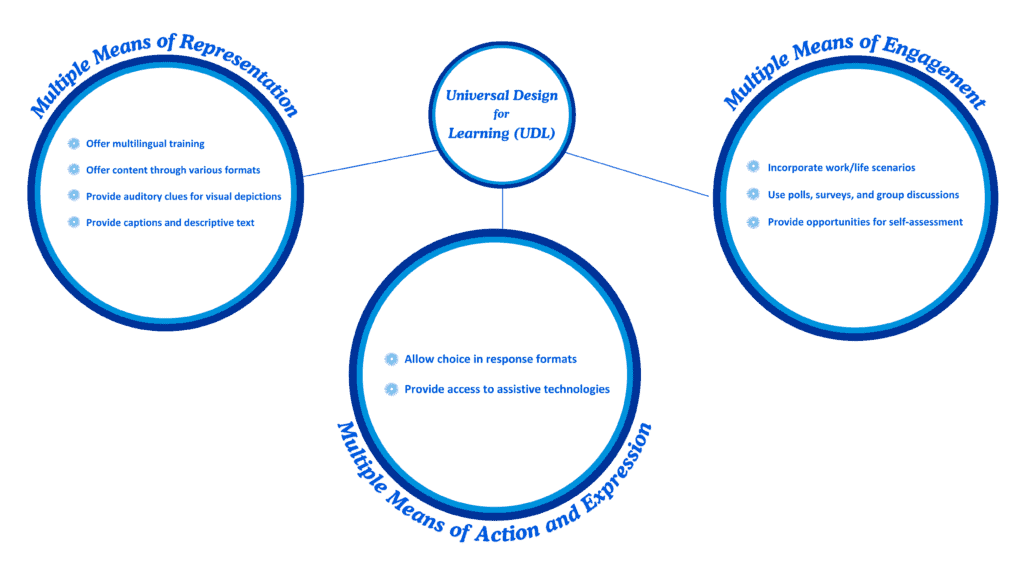It’s a truism to say that the best training is training that enables learners to acquire the information and skills they need to be successful. Learners are different and have diverse learning needs. A cookie cutter approach to training just doesn’t cut it as an effective way to train. Nor does it support an environment of inclusivity and equity. Most trainers don’t have the time or budget to create bespoke training for individual learners, so a more universal approach is needed.
So, what do we do?
This is where Universal Design for Learning (UDL) comes into the discussion. Trainers who want to create effective and inclusive learning environments can utilize the UDL framework. This framework, developed in the 1990s, is based on educational research into how people learn. The research repeatedly demonstrated that “learners are highly variable in their response to instruction.” (UDL: Research Evidence (cast.org)) As a result, UDL provides guidance for instructional design aimed at accommodating all types of learners The guidance is organized around three core principles. By incorporating these principles into your curriculum design, you can create training that benefits all learners.
UDL emphasizes providing opportunities for all learners to actively participate in training sessions.

Core Principles of UDL:
1. Multiple Means of Representation: This refers to the “what” of learning.
To accommodate diverse learners, multiple methods of receiving the content and information should be offered. Presenting your material through different modes will enable you to reach learners with a variety of learning preferences and abilities.
- Offer content through multiple formats such as videos, images, text, interactive activities, podcasts, infographics, job aids, and simulations.
- Provide captions for spoken content as well as descriptive text for any additional auditory effects.
- Provide auditory clues for visual depictions.
- Provide multilingual training so individuals can learn in their primary language.
2. Multiple Means of Action and Expression: This refers to the “how” of learning.
UDL encourages flexibility in how students demonstrate their understanding of the training material. By providing multiple ways for learners to interact with the material and express their learning, you are acknowledging their individual differences. When you design for action, you prepare for variability in cognitive and physical abilities as well as for language barriers.
- For demonstration of learning, allow learners to choose from different response formats (e.g., written essay, video presentation, hands-on activities, or discussion).
- Provide access to assistive technologies.
3. Multiple Means of Engagement: This refers to the “why” of learning.
UDL promotes creating a positive and inclusive learning environment that captures learners’ attention and focus. Your learners are individuals who respond in different ways, so having multiple means of engagement will reach more people. Starting with a “hook” – something that grabs attention — is good, but you also need to keep your audience’s attention throughout the training. Relate the training to specific work/life scenarios.
- Motivate learners by incorporating interesting content that highlights how your training will benefit them.
- Engage learners by using polls and surveys and fostering collaboration through small group discussion.
- Provide opportunities for self-assessment and goal setting.
Start now looking for ways to incorporate these UDL principles as you design and develop your workshops and courses.
By using varied presentation formats, allowing participant choice, and offering accessible materials, you will provide more accessible, effective, and inclusive training!




